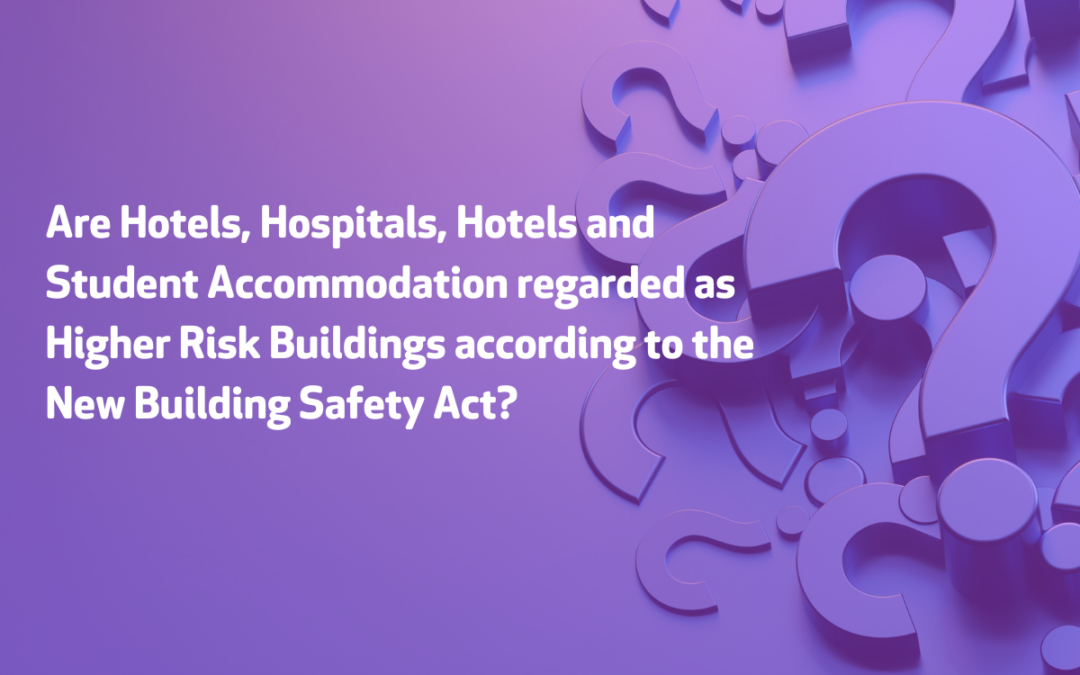Building Safety Act FAQ: Are Hotels, Hospitals and Student Accommodation regarded as Higher Risk Buildings according to the New Building Safety Act?
According to the Building Safety Act the definition of Higher Risk Building is:
“At least 18 metres in height or at least seven storeys and contains at least two residential units or is a hospital or care home.”
Care Homes, Hospitals and Student Accommodation are definitely within the scope. A recent consultation on definitions and scope described a residential unit as “a dwelling or any other unit of living accommodation” and gives the example of “a flat or rooms in a university hall of residence where amenities are shared”. It is clear therefore that student accommodation, meeting the height requirement, will be classed as a Higher Risk Building.
It is important to remember that for mixed use buildings the criteria covers ALL work in an in scope building, not just that in the residential parts of the building.
With respect to Hotels, the same consultation asked the question whether they should be drawn into scope and whilst the consultation response notes:
“Hotels and aparthotels were a particular concern with some respondents feeling they should be included within the scope of the new regime as people sleep overnight within hotels and may be unfamiliar with their surroundings in the event of a fire. There were concerns about the boundary between hotels and aparthotels and how and where this would be defined. A small number of respondents felt that apartment style hotels specifically should be included within scope on the reasoning that they are similar to residential buildings”
Government have used the following rationale to keep them out of scope of the definition of Higher Risk Buildings:
“We have, therefore, excluded hotels and other temporary leisure establishments, as well as secure residential institutions like prisons. In occupation these buildings are also already regulated by the Fire Safety Order, and generally, these buildings are staffed 24/7, have multiple routes of escape, signage and emergency lighting to assist evacuation and have a higher level of detection and alarm systems than residential buildings.”
This does not mean that the lanscape for hotels and other commercial buildings is not changing. The consultation response from Government (reaffirmed at the recent Building Safety Regulator’s Conferenece) states:
“All building work must meet building regulations requirements. Some elements of the new design and construction regime will also apply to all buildings. There will be dutyholder requirements on all those involved in the procurement, design and construction of buildings intended to proportionately address risks for all building work in the design and construction phase.”
So whilst this means Hotels may not need to go through the High Risker Building Gateways and be signed off directly by the Building Safety Regulator, the compliance environment will be more exacting moving forwards.
The Secretary of State can introduce new regulations in the future to define any other structure as a Higher-Risk Building if deemed appropriate.
For more information on the Higher Risk Building Process and an overview of the Building Safety Act, click here

